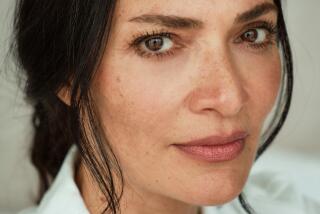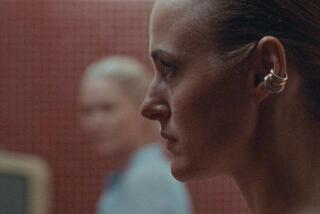Psychological Upheaval Reigns in ‘Betty Blue’
- Share via
The idea behind “Betty Blue” is an interesting one, even if it’s been done several times before. We’re always intrigued by what makes people crazy, especially if most of the catalyst is a fiercely iconoclastic personality that refuses to accept the world as it is.
Still, as the final entry in UC Irvine’s generally inspired “Love and Madness” series, “Betty Blue” (screening Friday night) seems a curious choice.
Jean-Jacques Beineix’s frail, often ponderous movie about a disturbed beauty and her loyal, if beleaguered, boyfriend doesn’t stand up well when compared to earlier series offerings like “Pandora’s Box” (directed by G.W. Pabst, 1928) and “Woman in the Dunes” (Hiroshi Teshigahara, 1964). Those films have the glaze of genius; “Betty Blue” just seems glazed.
That didn’t stop the picture from reeling in all sorts of foreign awards when released in 1986. “Betty Blue” won the top prize at the Montreal Film Festival among others and was hailed by overseas critics as an important achievement by the director of more compelling movies (take “Diva,” for example). Feelings were mixed over here, but some reviewers found ecstasy.
The central character, Betty, is fairly astonishing. We first meet her under the naked body of her lover, Zorg, as they go at it under a poster of the “Mona Lisa.”
Zorg (Jean-Hugues Anglade) may seem like a nice nobody, but actually he’s a frustrated writer with loads of potential. All he needs is a muse, a job suited for Betty (Beatrice Dalle)--after they’ve finished having lots of sex, of course.
Few movies relish love-making as much as this one, and we’re fortunate that Anglade and the pretty Dalle are presentable. Beineix uses sex as a symbol of youthful free spirit, which is just a perspired step away from artistic genius. Apparently, dementia (or at least wild, destructive mood swings) are also part of the process. Betty’s a certifiable nut. But what a cute one!
Her acting-out seems innocent enough in the beginning. She huffs and puffs and puts her foot down during squabbles with Zorg over his passivity in the face of life’s compromises (like a domineering, lecherous landlord), but gets more intense as the film progresses. Betty wrecks the landlord’s car, then she throws everything out of the bungalow, then she torches it, Zorg looking on in horror. Eventually, she cracks up, sending Zorg down a treacherous path along with her.
Beineix’s response to this psychological upheaval is oddly sterile, despite the emotional posturing of his actors, especially Dalle.
Ultimately, “Betty Blue” tells us almost nothing of what inspires these people. They are glorious riddles, great to look at but with no answers at all.
More to Read
Only good movies
Get the Indie Focus newsletter, Mark Olsen's weekly guide to the world of cinema.
You may occasionally receive promotional content from the Los Angeles Times.










